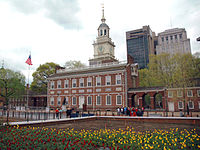
The Articles of Confederation and Perpetual Union was an agreement among the 13 states of the United States, formerly the Thirteen Colonies, that served as the nation's first frame of government. It was debated by the Second Continental Congress at Independence Hall in Philadelphia between July 1776 and November 1777, and finalized by the Congress on November 15, 1777. It came into force on March 1, 1781, after being ratified by all 13 colonial states. A guiding principle of the Articles was the establishment and preservation of the independence and sovereignty of the states. The Articles consciously established a weak central government, affording it only those powers the former colonies had recognized as belonging to king and parliament. The document provided clearly written rules for how the states' league of friendship, known as the Perpetual Union, would be organized.

The Thirteen Colonies were a group of British colonies on the Atlantic coast of North America founded in the 17th and 18th centuries. The American Enlightenment led these colonies to the American Revolutionary War. They declared independence as the United States of America in July 1776, which was achieved by 1783 under the Treaty of Paris.

The Continental Congress was a series of legislative bodies, with some executive function, for the thirteen colonies of Great Britain in North America, and the newly declared United States before, during, and after the American Revolutionary War. The Continental Congress refers to both the First and Second Congresses of 1774–1781 and at the time, also described the Congress of the Confederation of 1781–1789. The Confederation Congress operated as the first federal government until being replaced following ratification of the U.S. Constitution. The Congress met predominantly at Independence Hall in Philadelphia, though it was relocated temporarily on several occasions during the Revolutionary War and the fall of Philadelphia.

The Stamp Act 1765, also known as the Duties in American Colonies Act 1765, was an Act of the Parliament of Great Britain which imposed a direct tax on the British colonies in America and required that many printed materials in the colonies be produced on stamped paper from London which included an embossed revenue stamp. Printed materials included legal documents, magazines, playing cards, newspapers, and many other types of paper used throughout the colonies, and it had to be paid in British currency, not in colonial paper money.
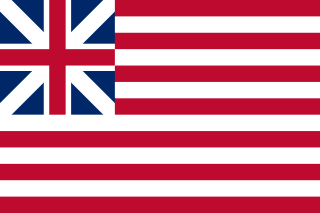
As a result of the American Revolution, the thirteen British colonies emerged as a newly independent nation, the United States of America, between 1776 and 1789. Fighting in the American Revolutionary War started between colonial militias and the British Army in 1775. The Second Continental Congress issued the Declaration of Independence on July 4, 1776. The Articles of Confederation were ratified in 1781 to form the Congress of the Confederation. Under the leadership of General George Washington, the Continental Army and Navy defeated the British military, securing the independence of the thirteen colonies. The Confederation period continued until 1789, when the states replaced the Articles of Confederation with the Constitution of the United States, which remains the fundamental governing law of the United States.
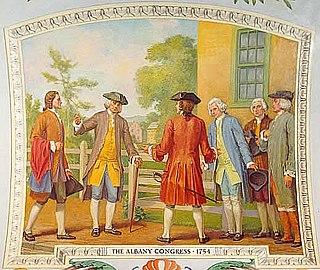
The Albany Congress, also known as the Albany Convention of 1754, was a meeting of representatives sent by the legislatures of seven of the British colonies in British America: Connecticut, Maryland, Massachusetts, New Hampshire, New York, Pennsylvania, and Rhode Island. Those not in attendance included Newfoundland, Nova Scotia, New Jersey, Virginia, Georgia, North Carolina, and South Carolina. Representatives met daily at the City Hall in Albany, New York, from June 19 to July 11, 1754, to discuss better relations with the Native American tribes and common defensive measures against the French threat from Canada in the opening stage of the French and Indian War, the North American front of the Seven Years' War between Great Britain and France.

The Second Continental Congress was the late-18th-century meeting of delegates from the Thirteen Colonies that united in support of the American Revolution and its associated Revolutionary War that established American independence from the British Empire. The Congress created a new country that it first named the United Colonies, and in 1776, renamed the United States of America. The Congress began convening in Philadelphia, on May 10, 1775, with representatives from 12 of the 13 colonies, after the Battles of Lexington and Concord.
Edward Biddle (1738–1779) was an American soldier, lawyer, and statesman from Pennsylvania. He was a delegate to the Continental Congress in 1774 and 1775 and a signatory to the Continental Association, which was drafted and adopted by that Congress.

The Stamp Act Congress, also known as the Continental Congress of 1765, was a meeting held in New York City in the colonial Province of New York. It included representatives from some of the British colonies in North America. It was the second gathering of elected representatives from British American colonies after the Albany Convention of 1754. The Congress sought to devise a unified protest against new British taxes by the British Parliament, which passed the Stamp Act, requiring the use of specialty stamped British paper for legal documents, playing cards, calendars, newspapers, and dice for virtually all business in the colonies starting on November 1, 1765.

Joseph Galloway was an American attorney and a leading political figure in the events immediately preceding the founding of the United States in the late 1700s. As a staunch opponent of American independence, he would become one of the most prominent Loyalists in North America during the early part of the Revolutionary War.
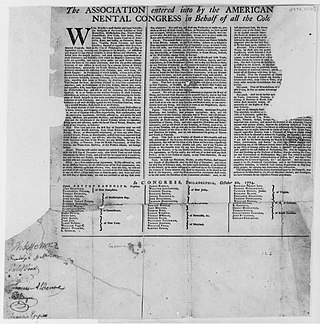
The Continental Association, also known as the Articles of Association or simply the Association, was an agreement among the American colonies adopted by the First Continental Congress in Philadelphia on October 20, 1774. It was a result of the escalating American Revolution and called for a trade boycott against British merchants by the colonies. Congress hoped that placing economic sanctions on British imports and exports would pressure Parliament into addressing the colonies' grievances, especially repealing the Intolerable Acts, which were strongly opposed by the colonies.

The committees of correspondence were, prior to the outbreak of the American Revolutionary War, a collection of American political organizations that sought to coordinate opposition to British Parliament and, later, support for American independence. The brainchild of Samuel Adams, a Patriot from Boston, the committees sought to establish, through the writing of letters, an underground network of communication among Patriot leaders in the Thirteen Colonies. The committees were instrumental in setting up the First Continental Congress, which met in Philadelphia.

Patriots were colonists in the Thirteen Colonies who opposed the Kingdom of Great Britain's control over the colonies during the American Revolution. Patriot politicians led colonial opposition to British policies regarding the American colonies, eventually adopting the United States Declaration of Independence on July 4, 1776. After the American Revolutionary War broke out in 1776, Patriots fought a victorious conflict against the British and their allies, which saw the colonies gain their independence as the United States in 1783.

The First Continental Congress was a meeting of delegates from 12 of the 13 British colonies that became the United States. It met from September 5 to October 26, 1774, at Carpenters' Hall in Philadelphia, Pennsylvania, after the British Navy instituted a blockade of Boston Harbor and the Parliament of Great Britain passed the punitive Intolerable Acts in response to the December 1773 Boston Tea Party. During the opening weeks of the Congress, the delegates conducted a spirited discussion about how the colonies could collectively respond to the British government's coercive actions, and they worked to make a common cause.

Pennsylvania was the site of many key events associated with the American Revolution and American Revolutionary War. The city of Philadelphia, then capital of the Thirteen Colonies and the largest city in the colonies, was a gathering place for the Founding Fathers who discussed, debated, developed, and ultimately implemented many of the acts, including signing the Declaration of Independence, that inspired and launched the revolution and the quest for independence from the British Empire.
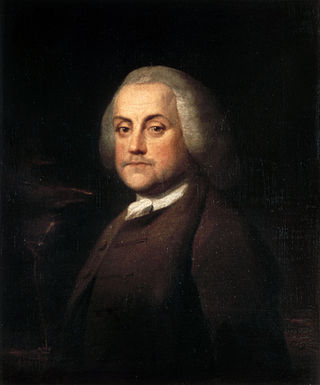
The Albany Plan of Union was a rejected plan to create a unified government for the Thirteen Colonies at the Albany Congress on July 10, 1754 in Albany, New York. The plan was suggested by Benjamin Franklin, then a senior leader and a delegate from Pennsylvania. Franklin spent much time among the Iroquois observing their deliberations and pleaded with the colonial leaders to consider the plan. More than twenty representatives of several Northern Atlantic colonies had gathered to plan their defense related to the French and Indian War (1754–1763), the front in North America of the Seven Years' War between Great Britain and France, spurred on by George Washington's recent defeat in the Ohio valley. The Plan represented one of multiple early attempts to form a union of the colonies "under one government as far as might be necessary for defense and other general important purposes." The plan was rejected but it was a forerunner for the Articles of Confederation and the United States Constitution.
The Committee of Sixty or Committee of Observation was a committee of inspection formed in the City and County of New York, in 1775, by rebels to enforce the Continental Association, a boycott of British goods enacted by the First Continental Congress. It was the successor to the Committee of Fifty-one, which had originally called for the Congress to be held, and was replaced by the Committee of One Hundred.
The New York Provincial Congress (1775–1777) was a revolutionary provisional government formed by colonists in 1775, during the American Revolution, as a pro-American alternative to the more conservative New York General Assembly, and as a replacement for the Committee of One Hundred. The Fourth Provincial Congress, resolving itself as the Convention of Representatives of the State of New York, adopted the first Constitution of the State of New York on April 20, 1777.

The Declaration and Resolves of the First Continental Congress was a statement adopted by the First Continental Congress on October 14, 1774, in response to the Intolerable Acts passed by the British Parliament. The Declaration outlined colonial objections to the Intolerable Acts, listed a colonial bill of rights, and provided a detailed list of grievances. It was similar to the Declaration of Rights and Grievances, passed by the Stamp Act Congress a decade earlier.
The Petition to His Majesty, The Memorial to the House of Lords and The Remonstrance to the House of Commons, commonly referred to collectively as the 1768 Petition, Memorial and Remonstrance, are a series of imprints that record a protest by the Virginia House of Burgesses in April 1768 that was sent to the British government by then-acting Lieutenant Governor John Blair.
